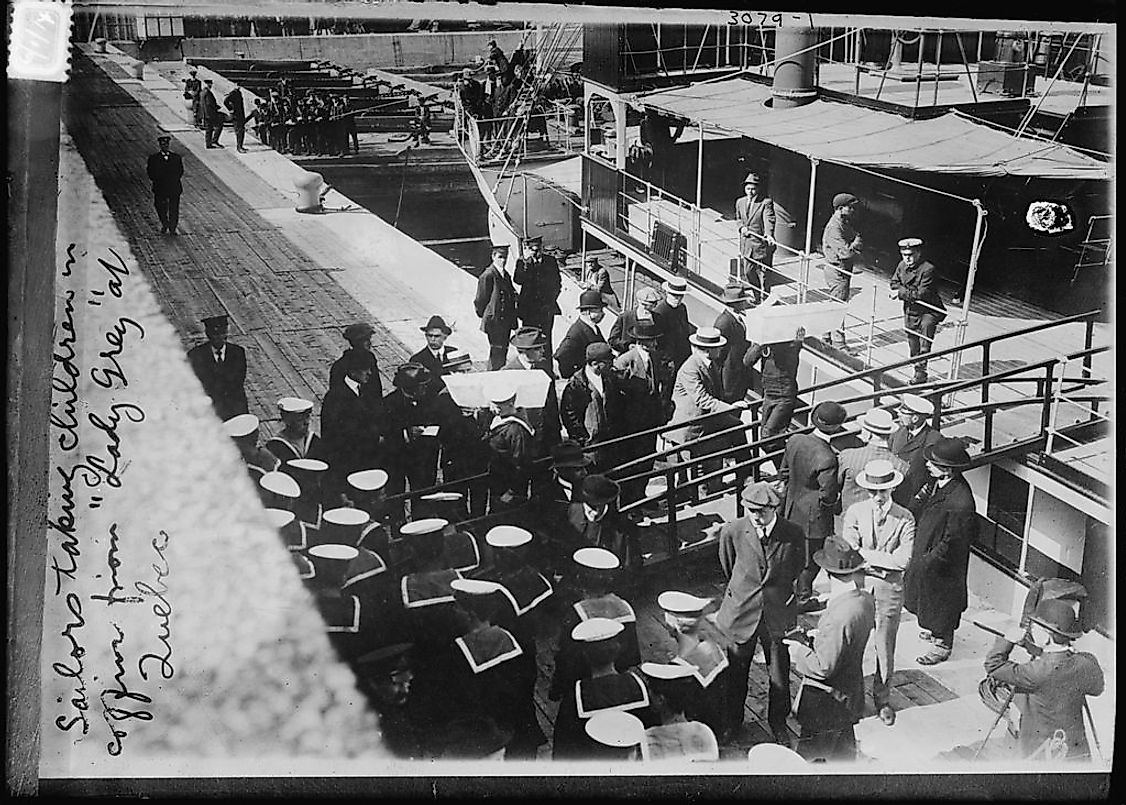The Deadliest Marine Disasters In Canada's History

Early Marine Disasters
The earliest shipwreck in Canada may have taken place in 1498 when John Cabot disappeared on his second voyage. Two years later, Gaspar Corte-Real vanished on a voyage to Newfoundland. Perhaps the wreck of Delight is the earliest known marine disaster. It involved one of the Sir Humphrey Gilbert‘s ship on Sable Island on August 29, 1583, leading to the drowning of over 85 people. In 1711, a British fleet sailing to attack Quebec hit a rock. The fleet which included the 19 warships and 41 other ships was carrying over 11,000 people on board. Almost 950 men were lost during the shipwreck. The rugged coastline and lack of marine aid such as fog signal and life-saving stations have taken a great toll on ships, especially those that lacked lifeboat capacity for those on board.
RMS Empress Of Ireland
The RMS Empress of Ireland was a huge ocean liner which was considered Pacific Steamship Line’s fastest and luxurious ship. It had made crossing the Atlantic stress-free since the launch in 1906. On May 28, 1914, the ship left Quebec City for Liverpool at about 1630hrs with 1,477 people on board including the crew. Captain Henry G Kendall was making his maiden trip down the St. Lawrence River in command of the ship. The ship disembarked at Rimouski, Quebec to pick up mail in the morning hours of 29th. RMS Empress of Ireland got underway into the St. Lawrence. Meanwhile, the fog began rolling in as the ship approached Father Point. Another ship, Stortad, heading towards Rimouski, Quebec was sighted from a distance before the fog could close in completely.
Both ships resorted to sounding the fog whistle to warn the other. Shortly before 0200hrs, with passengers and crew asleep, the Stortad ship loomed out of the fog just meters from the Empress. It was too late to react, Thee Collier crashed into the starboard side of the Empress severely damaging it. Water quickly gashed into the liner. The passengers in the Empress had not observed maritime rules since they had left the watertight doors and the portholes opened contrary to requirements. Most of the passengers and crew in the third class deck drowned quickly as water entered the porthole. The ship lurched to its side and sunk within ten to 14 minutes making the rescue efforts tough. The disaster led to the death of 1,012 people including passengers and crew. The sudden sinking and loss of many lives were attributed to three factors: the location of contact, failure to close the watertight doors, and the open porthole.
RMS Atlantic
The RMS Atlantic was an ocean liner belonging to the White Star Line. It operated between Liverpool, the UK, and the US. The ship departed Liverpool on March 20, 1873, on her nineteenth voyage with 952 people on board including 835 passengers. The captain decided to make a stop at Halifax, Nova Scotia to replenish coal for the boiler. As the liner approached Halifax on March 31, 1873, the captain was spending his time on the bridge while the ship was making her way through the storm. The ship was pushed off-course to the west of Halifax Harbor. However, the officers who were in charge failed to wake the captain or reduce the speed of the vessel as they approached the unfamiliar territory. The officers did not spot the Sambro Lighthouse which warns against the rocky shoals. On the morning of April 1, 1873, the Atlantic struck the underground rock and quickly sunk killing about 535 people leaving only 371 survivors.
The Great Lakes Storm Of 1913
The Great Lakes Storm or the Big Blow was a hurricane that swept across the Great Lakes Basin including the province of Ontario. The freshwater fury took place from November 7 to November 10, 1913, and was most powerful on the 9th. The storm overturned and battered ships on four of the five Great Lakes, especially Lake Huron. It killed more than 250 people and destroyed close to 40 ships. The financial loss amounted to over $5 million. The storm shut down traffic and communication along the shorelines. The storm originated from the area of convergence of two major storm fronts and was accelerated by the warm water in the lakes with the waves rose to over 35 feet.
Fishing And Sealing Disasters
Fishing and sealing off the coast of Atlantic have claimed several lives over the years. Over 400 vessels and over 1,000 lives were lost in Newfoundland between 1810 and 1870. On March 31, 1914, Southern Cross sunk on its way home due to the weight of seal pelt. All the 173 crew members drowned. On June 20, 1959, a fishing fleet of 22 boats was hit by a massive storm at New Brunswick killing over 35 men.
Other Marine Disasters In Canada
The Montreal steamer burned near Quebec in 1857 killing 253 people. The deaths could have been reduced if the crew had responded to fire immediately. In 1881, an overloaded Victoria steamer capsized near the Thames River in Ontario. Many of the passengers on board jumped off the ship when it became apparent that it was sinking. However, the deck fell on them killing about 182 people despite the relatively shallow water. In 1918, Princes Sophia ran onto a reef on the Lynn Canal during a snow storm. Two days later, the ship sunk killing all the 343 people on board. The heavy sea delayed the rescue missions leading to the high number of deaths. On June 26, 1930, a drillship was struck by lightning killing 30 men with only ten men surviving.







